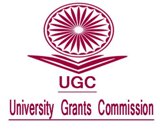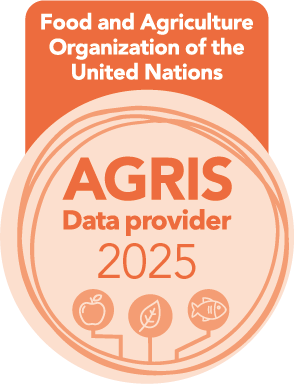Problems and Complexities in Rural Schools of the Himalayan Region: Challenges for Community Development
DOI:
https://doi.org/10.26725/JEE.2022.4.34.6932-6937Keywords:
Education; problems; challenges; rural schools, Himalayan region; Jammu & KashmirAbstract
The educational system of rural areas in India especially in the Himalayan region, is facing variousproblems like infrastructure, transportation, communication, and quality education. In the present paper, the focus has been given to identifying the problems and challenges faced by rural schools and factors affecting the quality of education in Himalayan region with particular reference to the Paddar sub-division in Jammu and Kashmir Union Territory. Using purposive sampling technique, data were collected from 19 schools, with 180 students as a sample. The findings of the study revealed that low educational qualifications of both parents, low socioeconomic status and low occupational status of parents were the major factors affecting the quality of education. Natural obstacles like harsh winters, heavy snowfall, a high mountainous area, and a lack of transportation also hinder the progress of education. Hence, there is a need to bring structural changes in the rural schools of Jammu & Kashmir.References
Agrawal, T. (2014). Educational inequality in rural and urban India. International Journal of Educational Development, 34, 11-19. https://www.sciencedirect.com/science/article/pii/S0738059313000436
Annual Status of Education Report (2022). Jammu and Kashmir rural. https://img.asercentre.org/docs/ASER%202022%20report%20pdfs/State%20pages/6%20pagers_English/ jammuandkashmir_9.pdf
Atchoarena, D., & Gasperini, L. (2003). Education for Rural Development towards New Policy Responses. International Institute for Educational Planning (IIEP) UNESCO. Paris,France. https://files.eric.ed.gov/fulltext/ ED499625.pdf
Bandyopadhyay, S., Bardhan, A., Dey, P., & Bhattacharyya, S. (2021). Exploring rural– urban education divide in India. In: Bridging the education divide using social technologies. Springer, https://doi.org/10.1007/978-981- 33-6738-8_7
Chaudhuri, K., & Roy, S. (2009). Gender gap in educational attainment: evidence from rural India. Education Economics, 17(2), 215-238. https://www.tandfonline.com/doi/ abs/10.1080/09645290802472380
Geelani, S. R. (2023, September 12). Rural schools grapple with teacher deficiency, basic facility shortages.GreaterKashmir.https://www.greaterkashmir.com/todayspaper/kashmirtodayspaper/
Glewwe, P., Siameh, C., Sun, B., & Wisniewski, S. (2021). School resources and educational outcomes in developing countries. The Routledge Handbook of the Economics of Education, 218-252. https://www.nber.org/ system/files/working_papers/w17554/w17554.pdf
Hong, K., & Zimmer, R. (2016). Does investing in school capital infrastructure improve student achievement? Economics of Education Review, 53, 143-158. https://www.zbw.eu/econis-archiv/bitstream/11159/269395/1/ EBP074733281_0.pdf
Knoeppel, R. C., Verstegen, D. A., & Rinehart, J.S. (2007). What is the relationship between resources and student achievement? A canonical analysis. Journal of Education Finance, 183-202. https://www.jstor.org/stable/40704323
Machin, S., McNally, S., & Meghir, C. (2010). Resources and standards in urban schools. Journal of Human Capital, 4(4), 365-393.
Majra, J. P., & Gur, A. (2010). School environment and sanitation in rural India. Journal of Global Infectious Diseases, 2(2), 109-112. https://www.ncbi.nlm.nih.gov/pmc/articles/PMC2889647/
Okoye, P. C., & Nwagwu, A. (2018). Influence of Parents Academic Qualification and Attitude on Academic Performance of Junior Secondary School Students in Education District II, Lagos. S/N Contents, 1.
Prathak, R., & Bhatia, S. (2019). A study of the impact of educational qualifications of parents on the academic performance of students of class XI in English medium CBSE schools in PCMC area. Educational Resurgence, 1(1). https://papers.ssrn.com/sol3/papers.cfm?abstract_id=3512745
Sumbria, N. S. (2022, January 13). Rural schooling a challenge. Daily Excelsior. https://www.dailyexcelsior.com/rural-schooling-a- challenge/
Suri, K. (2017, January 17). Rural education in J&K. Daily Excelsior. https://www.dailyexcelsior. com/rural-education-jk/
Tankeleviciene, L., & Damaševirius, R. (2009). Characteristics of domain ontologies for web-based learning and their application for quality evaluation. Informatics in Education, 8(1), 131–152.
Downloads
Published
How to Cite
Issue
Section
License
Copyright (c) 2022 https://creativecommons.org/licenses/by-nc-sa/4.0/

This work is licensed under a Creative Commons Attribution-NonCommercial-ShareAlike 4.0 International License.
Authors who publish with JEE agree to the following terms:
- Authors retain copyright and grant JEE right of first publication with the work simultaneously licensed under a Creative Commons Attribution License that allows others to share the work with an acknowledgement of the work's authorship and initial publication in this journal.
- Authors are able to enter into separate, additional contractual arrangements for the non-exclusive distribution of the journal's published version of the work (e.g., post it to an institutional repository or publish it in a book), with an acknowledgement of its initial publication in this journal.
- Authors are permitted and encouraged to post their work online (e.g., in institutional repositories or on their website) prior to and during the submission process, as it can lead to productive exchanges, as well as earlier and greater citation of published work (See The Effect of Open Access).
Extension Education Society
https://creativecommons.org/licenses/by-nc-sa/4.0/
This work is licensed under a Creative Commons Attribution-NonCommercial-ShareAlike 4.0 International License.













.png)

